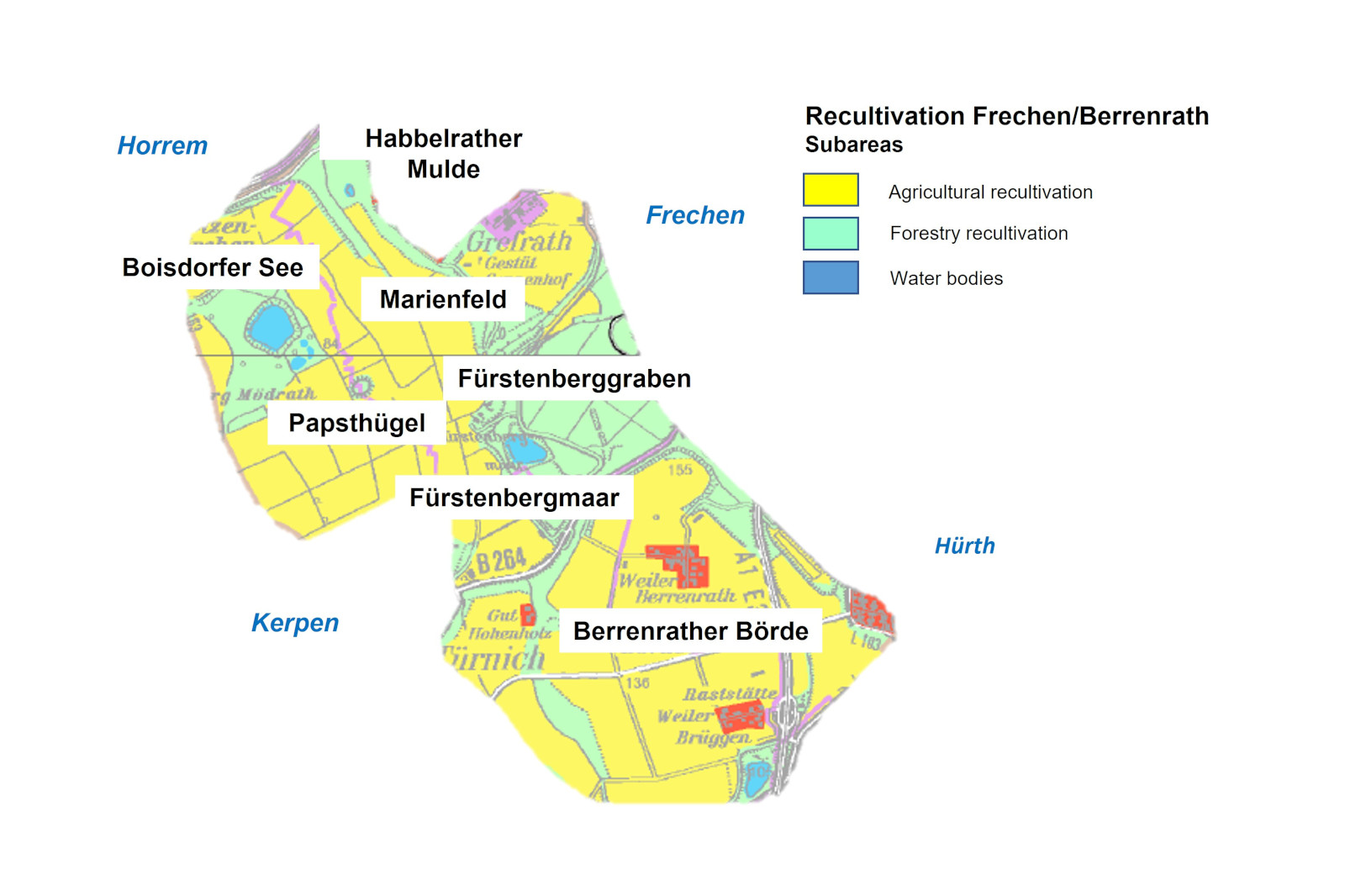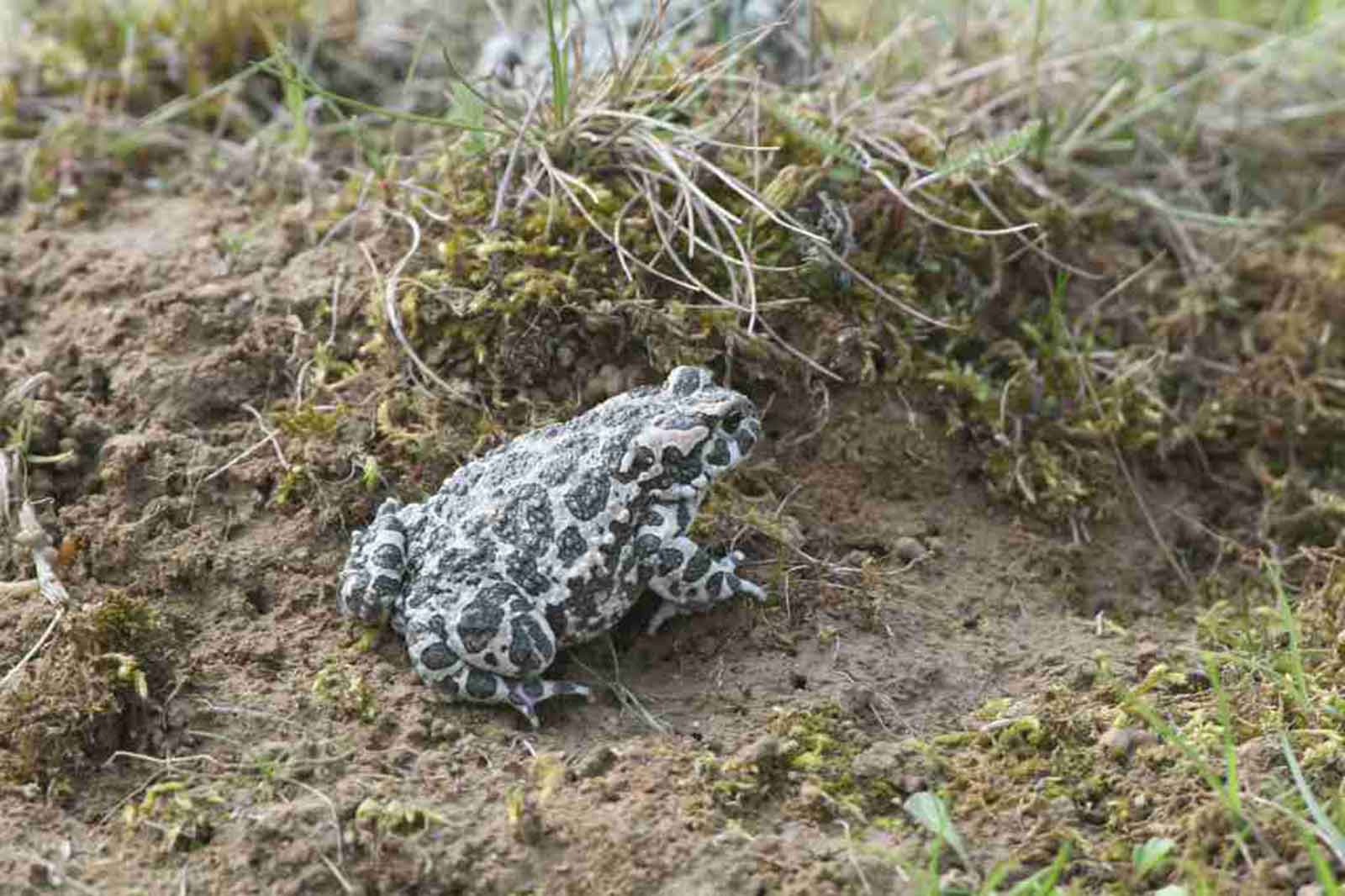
Completed recultivation
Forestry recultivation: approx. 1200ha
Agricultural recultivation: 1900ha
History
The recultivated areas of the Frechen and Berrenrath opencast mines are generally considered as one today. Both areas are located on what is called the Villerücken. The opencast mining history of the Berrenrather Börde dates back to the 18th century when lignite for commercial use was first mined there from initial smaller pits. The Berrenrath opencast mine was developed in 1914/15 by the Roddergrube operating company. Recultivation of the Berrenrath opencast mine began in the mid-1960s and was completed just ten years later. The Frechen opencast mine is located between the A4 motorway in the north and the B264 to the south. It is the first large-scale opencast mine where coal deposits far underground were mined in large mining fields. Coal mining here came to an end in 1986. Recultivation in this area was concluded in 2004. The open pit was backfilled with material from the Garzweiler and Bergheim opencast mines.
Subareas
The Berrenrather Börde is considered exemplary for consistent and successful recultivation planning. The elevation of the Börde district after recultivation is approximately five metres lower on average than the original terrain, except for the Wilhelmshöhe as the only larger rise. In landscape terms it is a plateau. Strips of forest divide the area used primarily for agriculture while the outer slopes are occupied by a wooded belt. The forestry recultivation areas perform the important task of connecting the southern part of the lignite area, predominantly recultivated for forestry, with the primarily agricultural area in the north through green corridors. A network of hedges consisting of up to 30 different types of trees and shrubs also extends through the farmland. In addition to diversifying the landscape and their positive impact on the microclimate, the hedges serve as habitats and corridors for the movement of numerous animal species.

A large green space containing the Boisdorfer See is found in the Frechen recultivated area, embedded in farmland typical for the Börde region. A flood detention basin for the Erft river was created in this green space, consisting of numerous landscape elements such as meadows, forests, ponds and pools as well as succession areas on various soil substrates. Biodiversity and the richness of species are promoted very effectively by the varied landscape elements. In particular, the Boisdorfer See with the adjacent Fürstenberggraben provides a valuable habitat, especially for birds and dragonflies. The Boisdorfer See is a rest area of state-wide significance and an important stepping stone for winter guests and migratory birds. It connects to the Fürstenberggraben with a length of approx. 4 km that joins the wetlands of the Fürstenbergmaar and the Boisdorfer See. The Fürstenbergmaar was restored in 1982. Recultivated poplar forests already existed east of the lake in the 1950s. Today the Boisdorfer See as well as the Fürstenberggraben and the Fürstenbergmaar are designated nature conservation areas. Recultivated forests with a high level of stagnant moisture, referred to as the ‘green lungs’, are found in the northern part of the Frechen recultivated area along with the Habbelrather Mulde, wetlands that were left to natural succession. Here the clay soils are also home to interesting orchids.

The Papsthügel and Marienfeld are of special interest from a cultivated landscape perspective. The closing mass for World Youth Day in 2005, attended by 1.2 million faithful, was held on the Marienfeld, a tract of arable land between the Fürstenberggraben, Fürstenbergmaar, Kerpen and Boisdorfer See. The Papsthügel, a mound ten metres in height with a cross and chapel, was created in memory of this event. A wooden cross ten metres tall that was blessed during this mass serves as a reminder of the site’s history as a place of pilgrimage dedicated to the Virgin Mary. The Marienfeld with the Papsthügel has been a place of pilgrimage on the Way of St James since World Youth Day in 2005.
Special ecological features
More than 380 plant and fungus species and over 420 animal species have been recorded in the Frechen/Berrenrath recultivated area to date, and a systematic study of some animal groups is still pending. Many of these species are endangered and on the Red List.
Some of the rare and endangered animal and plant species are:
Birds: Great crested grebe, little grebe, skylark, partridge, quail, red-backed shrike, stonechat, pintail, marsh harrier, little ringed plover, grey-headed woodpecker, reed bunting, reed warbler
Mammals: Brown hare, wild rabbit
Amphibians: Natterjack toad, green toad, agile frog
Reptiles: Sand lizard
Wild bees: Crossocerus wesmaeli digger wasp, Colletes marginatus plasterer bee, Melitta nigricans melittid bee
Grasshoppers: Blue-winged grasshopper
Butterflies: Chequered skipper, swallowtail
Dragonflies: Small red damselfly, small pincertail, green-eyed hawker, scarce blue-tailed damselfly, hairy dragonfly, banded darter, beautiful demoiselle, large white-faced darter
Orchids: 11 different native species, including southern marsh orchid and bee orchid
See our lists of species for more.










